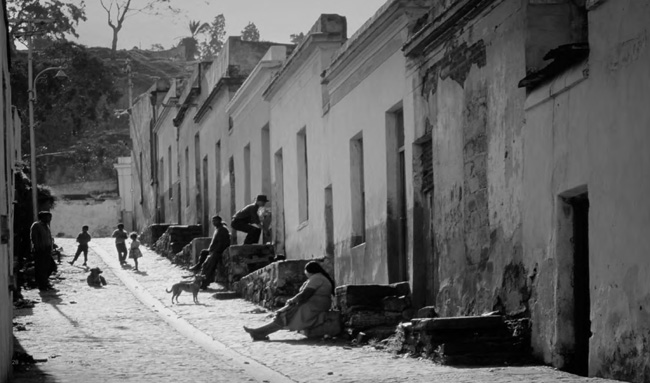Poetic sadness and beauty of bygone days
A photographic homage: Cape Town - Memories of the 1960s

Berg Lane, Bo-Kaap, 1958
"What will her future be‚Ķ" So opens Cape Town photographer G√ľnther Komnick's first page of photographs taken of Cape Town in the 1950s and 1960s. It sets the tone for this beautifully produced collection of photographs taken by Komnick.
Much has been said and written about the tragedy of District Six, and its destruction by the narcissism of nationalism in its apartheid guise, about the scar the destruction of the district has left on the collective consciousness of this city.
Komnick's collection relies on images, intimate and evocative, that encapsulate with deep affection much of that life that had been excised from the heart of our city, by ideology. Significantly, the word "memories" is in the title… in other words Komnick does not set out to make an overtly political statement.
That is not his intention, but rather to make an artistic statement, a statement about our collective humanity, so wantonly trampled on by the politicians of the day. Therein lies the value too of Komnick's heartfelt engagement with our city: his images speak to our shared humanity and are a far cry from "making poverty beautiful".
There have been many books on District Six and on the Bo-Kaap, both parts of Cape Town the subject of Komnick's book, as well as some images of central Cape Town. The poignancy of this collection inevitably lies in the history that we live with and the legacy the needless anguish inflicted on others by those "intent on seeking security and meaning in a gigantic act of layered mendacity", ie apartheid.
The recurring question that haunts one as one pages through the book, is "what might have been?". How did the individuals depicted in all their finery, their woes, their-day-to-day living respond to what was to befall them? The answers to some of these questions are eloquently expressed in the text by author, academic and medical specialist Dr Cassiem D'arcy, born in District Six. One of the dangers D'arcy has avoided is in stating the obvious, but rather he has placed the 1950s and 1960s Cape Town in its historical context, without being wordy or indulgent. The history of Cape Town, a pivotal point in the history of Western expansion, is concisely put across, as is the significance of the events of 1966. The text is not merely a reaction against the events of 1966, but engages with the history of Cape Town in such a way as to illustrate what apartheid represented in the urban history of a community that was as old as Cape Town itself.
Komnick shows us pictures of people as an extension of their environment, and the environment amplifies the people. There is a poetic sadness and a beauty in the images: smiling faces, people going about their day-to-day tasks, chatting, smoking, children playing. All this points to a normality, which the viewer knows to be endangered.
Although these photographs were taken, in many cases, more than 50 years ago, they have an immediacy and a freshness about them that probably has a lot to do with the perspective Komnick himself brings to his art, as an East Prussian who has lived through the horrors of World War II and its aftermath. Gavin Furlonger's eloquent foreword refers to this. He views the scenes for their intrinsic, inherent worth, their spontaneity, for the humanity that flows from the scenes.
The beautifully produced book, launched at an exhibition which opened at The Photographers Gallery za & Erdmann Contemporary, also has a full description of each photograph, at the back of the book. So for example "A bridegroom and his two Strooijonkers (best men)". This caption is then followed by a detailed description of the occasion when the photograph was taken.
A most arresting photograph is that of a man reputed to be Sheik Ahmed Khadeer, a stern dignity filling the page. Other images include scenes of weddings, an early morning shot of flower sellers, boys playing in Hanover Street, with the times being decipherable thanks to the old number plates on the Zephyrs and Peugeot 403s in the background. Veiled women chatting on a balcony, washing flapping in the wind, deep discussions, children enjoying lollipops... and a particularly captivating image of Berg Lane, Bo-Kaap in 1958.
Komnick's Cape Town - Memories of the 1960s, achieves its aim of taking us back to another time, and reminds us too that that which was destroyed lives on in a collective memory. His art is clearly a labour of love, and helps to give a context and a sense of belonging as his images have people at their centre. This is all the more valuable at a time when so much is fractured and forgotten.
The book accompanies the exhibition at the Photographers Gallery za & Erdmann Contemporary, 63 Shortmarket Street, Cape Town.